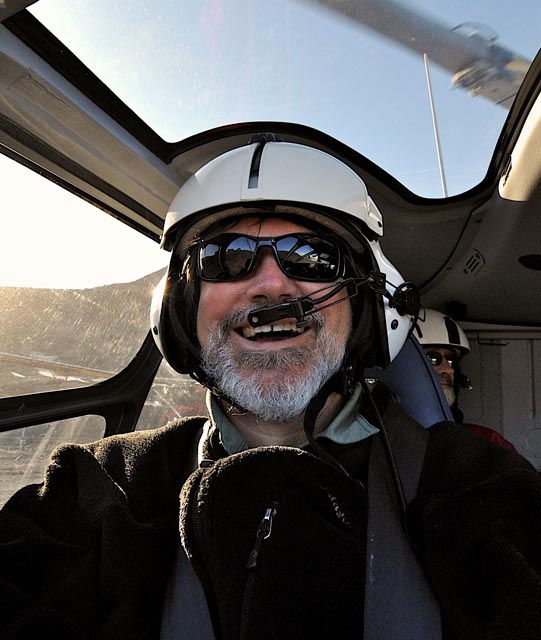|
Airy wordsHood's book of poetry pays homage to aviation in AntarcticaPosted April 12, 2013
Writer and photographer Charles Hood’s canon of work is small but diverse, ranging over topics as diverse as the Enola Gay and the Los Angeles River, with an obvious love of history and a poetic sensibility that defies easy categorization. His latest work, South x South, celebrates Antarctica’s aviation history and unique culture through a series of poems, from the playful to the meditative. Hood was the recipient of a 2010 Antarctic Artists and Writers 1. Your original project was to write a history on Antarctic aviation. How does a poetry book fit in? Did you start writing these while you were in the ice? One thing that many people mistakenly assume is that poetry can’t contain accurate history, or that a collection of creative writing can’t assert and defend a thesis as readily as a book on geology. From the Langewiesche epigraph (which comes from Inside the Sky) to the rather sci-fi, flight-gone-wrong ending, this book is simultaneously a history of aviation, a celebration of it, and a meditation on the sheer ecstatic strangeness of moving through Antarctic airspace. 
Photo Credit: Charles Hood
Charles Hood inside a helicopter during the 2010-11 field season in Antarctica.
In the end, most books are a compromise between an imagined ideal and a quotidian and commoditized reality. In my case, there was a three-year lapse between my NSF proposal and my fieldwork, and then after that, it took a year to write the book, and then another year before the book came out. In that time the publisher who had initially encouraged me to write a prose book had backed out, and meanwhile I had won a national poetry contest that came with guaranteed publication. This is normal; even at the large trade houses, editors come and go, and projects come and go with them. To me, truth matters more than genre. A related fact was that it took me a long time to find a voice and pace for this book. It’s such a hard experience to process, don’t you think? While still at McMurdo [Station] 2. The subtitle of the book says "poems from Antarctica." Where else are these poems from? There are references to your childhood, history, even a fellow Antarctic poet, Kate Coles. The subtitle came from my publisher, and that’s just simple marketing. They need to let the clerks at a bookstore know which shelf this goes on. For me, the blend of topics makes sense. I can’t imagine a single person who voluntarily works in Antarctica who has not been influenced in some way by the legacy of previous explorers and scientists, and by the romantic notion of the “sublime” in landscape. Indeed, for many workers — scientists, support staff, pilots, and artists, all equally — to be on the Ice is to fulfill a childhood dream. Some of us want to play in the Super Bowl, some of us want to be prom queen, and some of us (who knows why!) need to go south — all the way south. 
Photo Credit: Charles Hood
The air facility building at Marble Point at the McMurdo Dry Valleys provides a place for helicopters to refuel.
I do want to give a special shout to [Artists & Writers participant] Kate Coles 3. What attracted you to Antarctica in the first place? My wife keeps asking me that — she thinks we’re all bonkers to like it there. And for me, it was hardly preordained. I grew up in a working-class household, one without many books. Nobody in my family went abroad unless they had been drafted. Yet one year by accident I was placed into a fast track enrichment program, and once a month we all got bused to a regional science library. In a National Geographic compendium of adventures, I actually read about Adm. Byrd’s flight before I knew about Scott and Amundsen. From then on, I was hooked, or perhaps I should say doomed. That was in fourth grade. In time, I left the barrio, and I’ve never looked back. |



For USAP Participants |
For The Public |
For Researchers and EducatorsContact UsU.S. National Science FoundationOffice of Polar Programs Geosciences Directorate 2415 Eisenhower Avenue, Suite W7100 Alexandria, VA 22314 Sign up for the NSF Office of Polar Programs newsletter and events. Feedback Form |


